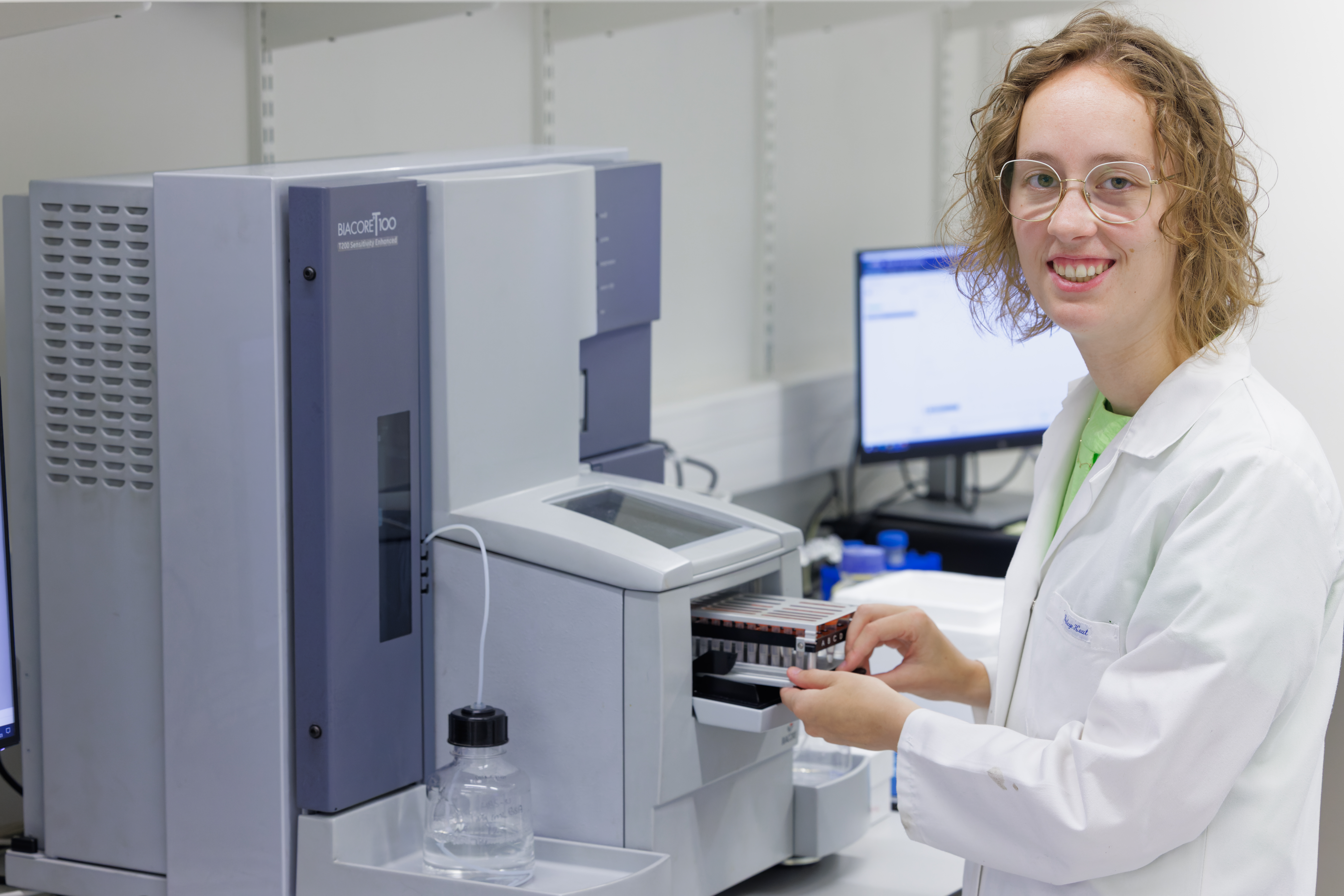
4 minute read
BIOMOLECULAR BREAST CANCER DETECTION
ALUMNI NEWS
In Belgium, one in 10 women will ever develop breast cancer. This is 10,000 patients a year. The earlier the cancer is detected, the lower the risk of metastasis. Mammography, ultrasound, puncture, and MRI are the most common detection methods. In her master’s thesis, Kaat Verleye, master’s student in Biochemical Engineering Technology at Group T Campus, investigated an alternative method. It earned her a final place in the VBI Student Research Award 2023.
VBI is the alumni association of bioengineers and masters in Biochemical Engineering Technology and Biosciences at KU Leuven. Every year, the organisation awards the best master’s theses. Kaat was named Faculty of Engineering Technology laureate by the jury for her innovative work on the timely detection of breast cancer.
Particles
In her master’s thesis, Kaat investigated the usefulness of extracellular vesicles (EVs) as a biomarker for breast cancer. “EVs are ultra-small particles secreted by cells -healthy and unhealthy- that circulate throughout the body,” Kaat explains. “What makes EVs so interesting is that they pass molecules-in this case particles-from their cell of origin to other cells. EVs derived from breast cancer cells can contain a specific membrane protein with the cryptic name CXCR7. Timely detection of this protein can prevent the cancer from spreading.”
“Conventional techniques to analyse EVs are cumbersome or require a large number of samples,” Kaat continues. “In the classic and widely used ELISA technique, for example, detection is done by binding proteins that are labelled. The binding to an enzyme can trigger a colour signal indicating EVs from breast cancer cells.”
Interactions
In her master’s thesis, Kaat opted for an alternative method, specifically surface plasmon resonance. “SPR is a label-free method for detecting biomolecular interactions in real time. SPR occurs when electrons on a thin metal plate are excited by light directed at the plate from a certain angle of incidence. Through SPR, interactions with low concentrations of molecules can be detected in a relatively simple way.”
At present, SPR is rarely used to study extracellular vesicles. “Proteins usually change conformation when they move outside the cell membrane,” explains Kaat. “This change also usually leads to the loss of function. This makes it very difficult to analyse these proteins outside the cell. With extracellular vesicles it is easier, as those are vesicles originating from the cell with a lipid double layer that ensures the correct conformation. When the protein is then transferred to the extracellular vesicles, it is possible to study this with SPR and also in doing so to be able to look for drugs that act on the correct conformation of the protein.”
Diagnostic
Kaats study consists of two parts. One is a diagnostic assay for the detection of breast cancer and the other is a kinetic analysis with the previously mentioned CXCR7. “The results showed that SPR applied to EVs is quite useful as a diagnostic method. Furthermore, there are also clear indications that EVs are useful for kinetic analysis of molecules that can bind on proteins important in various disease symptoms. The latter in turn opens up prospects for the development of new drugs.”
In this way, Kaat kills two birds with one stone. She introduces a rapid method for the timely detection of breast cancer and shows a way to look for an appropriate medication for those whose detection came too late. “In recovery, we can indeed look for drugs that act on CXCR7 which will prevent tumour metastasis. If a compound is found against CXCR7, the pharmaceutical industry will come up with a lot of money as it can help not only against breast cancer but also against lung and prostate cancer. With SPR, we already have a good technique to search for these compounds.”
Yves Persoons











